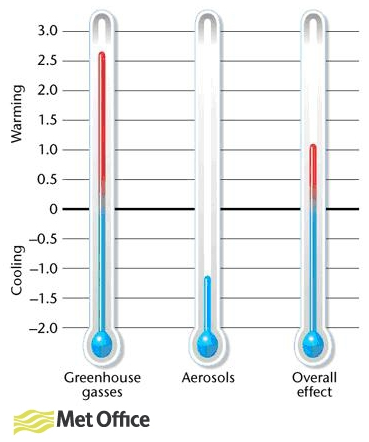Readers sent us letters regarding the contributions of human-caused and volcanic emissions of sulfur dioxide, or SO2.
In the FactCheck Mailbag, we feature some of the email we receive. Readers can send comments to editor@factcheck.org. Letters may be edited for length.
Human SO2 Emissions and Cooling
I just read Dave Levitan’s article regarding Mike Hukabee’s claim regarding man’s CO2 emissions vs. volcanoes’ [“Huckabee’s Hot Air on Volcanoes,” July 29]. Even before MH’s claim, I was always curious whether our efforts to curtail CO2 emissions were offset by a volcano, but hadn’t before found much info comparing the two. I also had heard about the cooling potential of SO2. It was thus with interest that I read the actual number comparisons provided by Dave. However the numbers on SO2 don’t make sense and Dave didn’t clarify further.
Dave writes, “The eruption of Mount Pinatubo in 1991 released an enormous cloud of SO2 — about 20 million tons. This caused the world to cool, not warm, by about half a degree Celsius. Still, though, this can’t match human emissions of SO2, which also comes from smokestacks and other sources. Though emissions have been declining in recent decades, humans still annually emit about 100 million tons of SO2, according to a 2013 study published in the journal Environmental Research Letters.”
If 20 million tons of SO2 from Mount Pinatubo cooled the earth 0.5 degrees Celsius, then man putting five times [that much] SO2 in the atmosphere annually should cool the earth 2.5 degrees annually. Obviously this doesn’t happen. I think Dave should have followed up with an explanation why, if the numbers are correct, this doesn’t happen.
Though I believe man is causing warming, this discrepancy causes Dave’s other statements and conclusions to be suspect.
Jay Carldon
Westfield, New Jersey
Do you realize what your article said??
You wrote that Mt. Pinatubo actually cooled the planet, not warmed it, because it blew out 20 million tons of sulfur dioxide besides the 50 million tons of carbon dioxide. Cooled by a half degree C, or about .9 degrees F.
Let’s assume your facts are accurate (I have no reason to believe they aren’t).
You also said that man releases 100 million tons of sulfur dioxide every year. That’s five times as much as Mt. Pinatubo. And Mt. Pinatubo cooled the planet that year even though mankind released its usual quota of 30 billion (with a b) tons of carbon dioxide into the air. So, if 120 million tons (total) of SO2 lowers the worldwide temperature a half a degree, how much will a mere 100 million tons lower the temperature? I don’t know the answer to that, but my first guess would be to take the rise that is supposed to happen each year based on CO2 increases alone (I haven’t been able to find that exact number), find the difference between that number and -0.5, then calculate 80% of the result. So the question almost asks itself: Is man-generated SO2 cooling the whole planet as much as CO2 should be warming it? Is that a possible reason why there has been no significant rise in global temperature for the past 10 or 15 years?
I’m not grinding an ax, here. My question is solely based on what I read in your article.
Any comments?
Dean Kennedy
Minerva, Ohio
FactCheck.org responds: The idea that the 100 million tons humans emit should elicit a similar effect to that of a large volcanic eruption sounds logical, but it is not in fact correct.
Though human-caused emissions do indeed have a cooling effect on the world, they do not function in exactly the same fashion as volcanic emissions. Volcanic SO2 emissions rise into the stratosphere (which begins between about 30,000 and 50,000 feet above sea level), while most emissions from human sources stay much closer to the ground, as the Union of Concerned Scientists explains. Those stratospheric volcanic SO2 particles can stay airborne for several years, reflecting sunlight back into space and cooling the planet beneath; the human-caused emissions at lower altitudes, meanwhile, will only remain aloft for a very short period, and have a much lesser cooling effect.
More generally, the cooling effect of human SO2 emissions is far overshadowed by the warming effect of human CO2 and other greenhouse gas emissions. The image below from the Met Office in the United Kingdom illustrates this point. Without human SO2 and other aerosol emissions, the world would be warming even faster.